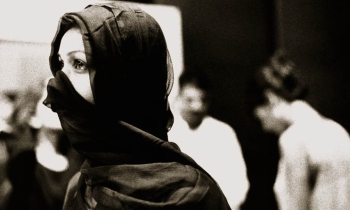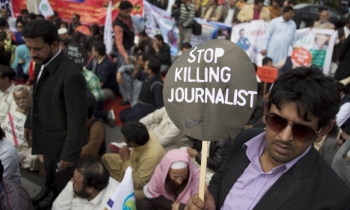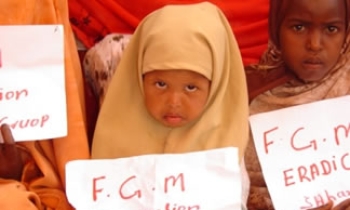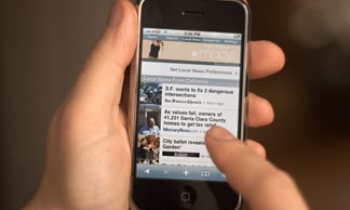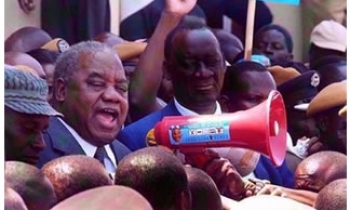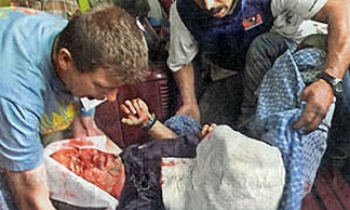As an uneasy truce prevails on the Israel-Lebanon front, it is time for the Lebanese media to take stock of the situation. The month-long operations saw the destruction of basic infrastructure and the imposition of a land, sea and air embargo leading to a massive drop in advertising, distribution problems, and fears of paper supply shortages.

Though there has been a halt to hostilities, Israel is yet to lift its embargo on Lebanon.
"If the war lasts, it will be difficult to hold on," Élie Fayad, head of the local section at the French daily L'Orient Le Jour was quoted by the Arab Press Network as saying. "We make money from our advertising and circulation. In times of war, advertising decreases and sales drop since less newsagents are open and roads are blocked," said Ayad Tassabehji, general manager of the Daily Star. He wondered how would newspapers continue publishing if both circulation and advertising continue to drop.
Advertising has become a problem for every newspaper. "It has dropped by 50 or 60 percent," said Edmond Saab, executive editor-in-chief of one of the most popular Arabic-language dailies, An-Nahar. Sales of the publication have slightly increased.
This is not the case for all Lebanese newspapers. Al Safeer, an Arabic daily popular among the Shiite community, registered an initial increase in sales from the beginning of the war to 16 July, when the population of the most dangerous areas started to evacuate their homes. Since then, circulation decreased steadily, according to the newspaper's editor in chief, Talal Salman.
"Some areas lost readership and others gained. People are moving around the country and sales are more or less following this movement. However, as more and more people are fleeing the country, I predict less and less sales of newspapers over the coming period," Tassabehji was quoted as saying.
The embargo imposed by the Israeli army has also posed a major logistical problem for newspapers. "The borders are closed for any shipment. We will run out of newsprint by the end of the month," says Tassabehji. L'Orient Le Jour and An-Nahar were facing the same problem.

"To compensate these losses, the number of pages has been reduced from 28 to 24, those four pages being approximately the number of advertising pages we used to carry before the war," said the An-Nahar editor-in-chief. The Daily Star and Al Safeer adopted similar measures.
Despite that reduction in the number of pages, every Lebanese newspaper increased the space devoted to local information and analysis of the current events. Other sections, such as sports, were reduced or removed. Lebanese newspapers devoted extra space for pictures and ground coverage. Yet security was an acute concern.
Journalists also had problems gaining access to cover the events. "There were no taxis, no fuel and roads had been bombed, isolating some regions from the rest of the country," said George Chamieh, financial director of L'Orient Le Jour. Others just could not travel to their offices or took a big risk in doing so. As a temporary solution, the Al Safeer premises became a temporary shelter for those staffers –journalists and technicians — who lived in targeted areas.
"The main difficulty is security of the staff coming in and out of the office. The other is to keep staff moral up," said Tassabehji. "Humans in general, and journalists are no exception, become demoralised after few days of bombing. It is almost impossible to write a business story when you know that a bomb might fall on your head."
Working through the war was certainly more than difficult.
Leila Hatoum, a reporter at the Daily Star, continued to work during the conflict between Israel and Hezbollah – despite air strikes having forced her to move twice, an Integrated Regional Information Networks (IRIN) report said.
"My house is in the Roueiss area in the heart of the southern suburbs, an eight-minute walk from the Hezbollah-secured neighbourhood of Bir al-Abed. I have lived there my whole life. The area was [before the conflict] bustling with life, shops and people and, frankly, it was the safest area to live in.

"Because of the Israeli attacks, on 18 July I left my diplomas, books, pictures and belongings and moved to my grandma's house in the Shiyah area, mid-way between the southern suburbs and my work in central Beirut," Hatoum told IRIN.
Photographer Layal Nejib was not so lucky. Nejib was killed July 23 when her taxi was hit by a shrapnel as Israeli warplanes bombarded a convoy of civilians feeling their homes near Tyre in southern Lebanon. Nejib, 23, was the first journalist to be killed in Israel's offensive to push back Hezbollah guerrillas who captured two Israeli soldiers and killed eight others on July 12.
Nejib's death came a day after Suleiman Chidiac, a technician working for the Lebanese Broadcasting Corporation (LBC), was killed during Israeli air raids on television transmitters and telephone towers in northern Lebanon. Chidiac managed LBC's transmission facility at Fatqa, which was destroyed. The same day, Khaled Eid, a technician for Tele-Liban, was seriously injured in an attack on a telecommunications tower belonging to the state-run television station in al-Qura.
Israeli artillery hit another convoy evacuating villagers from southern Lebanon on July 28, slightly wounding a Jordanian journalist working for German television N24 and a driver. An Associated Press (AP) report said the explosion occurred as the ambulances, evacuees and journalists were returning from the village of Rmeish, where it had picked up residents — including Americans and Australians — trapped by the fighting.

The driver, Mohammed Haddad, who wore a bulletproof jacket, had some cuts on the neck and right arm, but was conscious and walking when he was taken in for treatment at the UN hospital. The cameraman, Mohammed Haddad, was taken to a hospital in Beirut from where he was discharged after treatment the next day.
At least three journalists were wounded on August 7 when they attempted to cover the aftermath of an apparent drone attack on an individual on a main road in Tyre. The journalists had been at the Jebel Amal Hospital in Tyre when they went to the scene of one or possibly two explosions that occurred about 200 metres up the road. When the lead car arrived at the scene, another apparent missile was fired, injuring reporter Scott Anderson of the New York Times Magazine, Magnum photographer Paolo Pellegrin, and their driver. The three men, who, like the other journalists, were travelling in cars clearly marked as "Press", suffered concussions or shrapnel wounds.
While journalists based in Israel have generally been able to cover Israeli activities, live television pictures of the operation along the border from the Lebanese side slowly became virtually impossible. Broadcasters said a few individual TV journalists and media support staff remained in some southern Lebanese towns and villages but getting TV footage out was extremely difficult.
Meanwhile, the Lebanese media is gearing up for possibly tougher days to come.

